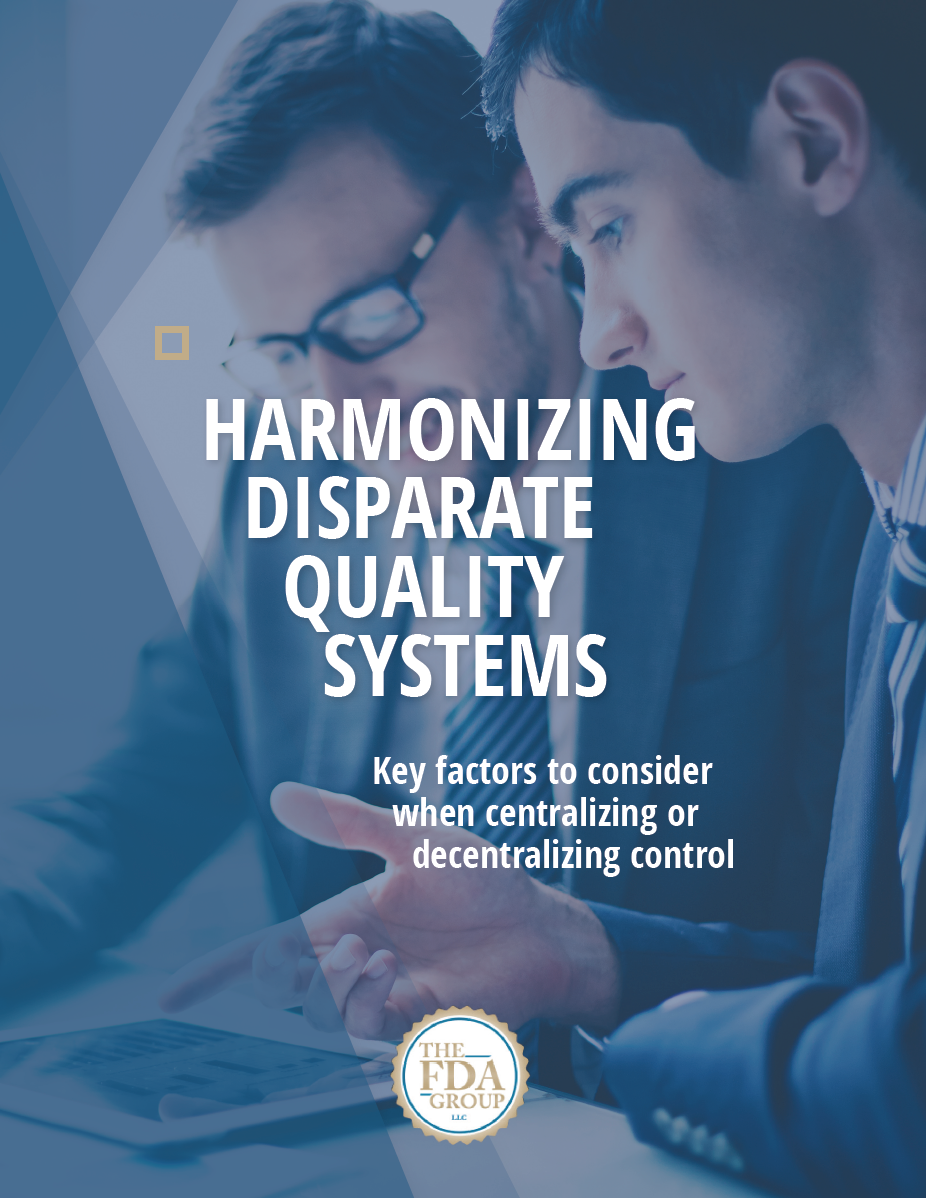Consolidation through mergers, acquisitions, and technology transfers has become an increasingly common trend throughout the pharmaceutical and medical device industries.
In pursuit of emerging therapies and more diverse product offerings, industry heavyweights are crafting alliances and penning new deals while innovative newcomers groom themselves for acquisition.
While last year saw something of a break in the M&A action compared to the two years prior, the market forces driving these decisions continue to apply pressure throughout the industry, leading many to believe the trend will re-accelerate following a period of strategy and future planning.
In our recent white paper (available here for free) we shed light on the questions that arise during and after the decision to acquire or merge with another company—particularly in the area of quality and compliance.
This article offers a snippet of what you'll find in the white paper. Our expert contributors drew on their consulting experience to highlight three areas of an incoming quality system that company and department leaders should pay close attention to.
1. Corrective and Preventative Action (CAPA) Programs
A well-functioning CAPA program is a key tool in the overall improvement of a company—not just for the quality system but the organization as a whole.
“CAPA is a formal system for taking problems in, defining them, determining the root cause and conducting correcting action and evaluating that corrective action. It’s an effective way to solve problems. The question is, how is the company actually applying their CAPA program? This can tell you a lot about the health of their quality system.”
– Larry Stevens, RAC
A major component of CAPA review is ensuring they’re being crafted according to the formatting requirements and other guidelines taken directly from regulations. Problem statements, project plans, root cause analysis, and the other required elements must be clearly defined before setting out to verify and validate that actions described within them take were indeed effective and clear of any adverse effects on products.
→ Read our article, “3 Key Elements of a Successful CAPA System,” for an overview of the components that make for robust, compliant CAPA.
While many CAPA requirements are clearly stated by regulators, The FDA Group’s Larry Stevens, RAC—a former FDA investigator—says the Agency has particularly high expectations for CAPA, which many companies fail to realize.
“FDA has some tremendous expectations for CAPA programs—what I call ‘unwritten regulations’. There are quite a few combination companies getting strapped with CAPA requirements because of their device component. It’s a struggle for them.”
– Larry Stevens, RAC

While issues with CAPA fundamentals should certainly trigger cause for alarm, a company’s software systems can be a major factor in deciding whether to centralize an incoming quality system or not.
One kind of software implementation can look starkly different from another—and a paper-based system even more so. Given this complexity, the desire to keep software standardized throughout the entire company can compel companies to do what is necessary upfront to bring new sites under their current system. Although this can be a considerable short-term hurdle and may result in significant quality and compliance problems if not overseen by an experienced quality leader or third party consultant, the long-term benefit can be well-worth the trouble.
→ Get our free white paper, “Harmonizing Disparate Quality Systems,” for an expert guide to integrating incoming quality systems.
Rather than contending with an array of different systems, quality and compliance teams can respond to and address problems much faster and more completely when armed with intimate knowledge of how each is run regardless of where it is.
“Companies absorbing new sites must be diligent in mapping out an incoming systems to understand its level of integration in terms of actions, forms, and software processes before mapping out the desired system in terms of personnel actions and software capabilities. They might apply some lead principles and combine them to arrive at the most efficient path toward integration.”
– Rich Wynkoop

2. Complaints
Determining an incoming company’s complaint threshold is key. What exactly is a complaint and what isn’t? If a piece of capital equipment undergoes regular service, for example, when does that servicing become a complaint versus just “servicing” or an inquiry? Are you actually fixing machines or is it preventative maintenance? These questions are highly specific to each company and should be evaluated as such.
An organization’s reporting requirements should be subjected to similar scrutiny. Despite the definition that applies to MDR depending on the type of complaint, some organizations operate by their own definitions, making it important to get a clear picture of how an organization arrives at these determinations before and comparing the process against the corporate standard. Even though the incoming company may be compliant, there may be gaps between companies that can lead to problems.
It’s also important to evaluate the company’s connection (or lack thereof) between complaint handling and risk management.
“I’ve seen the effect of disconnected complaint and risk management programs firsthand. While on-site, a complaint came in identifying a certain problem with a product. After asking to see the Design Failure Mode and Effect Analysis (DFMEA) to pinpoint where that particular failure mode was considered and how it was mitigated, we discovered it wasn’t there. FDA will be looking at this and you need to make sure complaints are closely linked to the risk management system. Ultimately, you’ll have to make a decision based on what the incoming company is currently doing and how that affects the overall risk profile. How in-control is it really?”
- Larry Stevens, RAC
3. Management Review
How often and how well a company conducts its management reviews can reveal a lot about its commitment to quality. While there’s no hard-and-fast rule regarding how frequently a company should be conducting formal management review, the two extremes should be seen as red flags at each end of the spectrum.
If a company is conducting “management reviews” once a month, for example, you may discover that these gatherings are actually staff meetings in disguise. Once a year, on the other hand, is likely too infrequent to ensure problems are being identified and addressed in a timely matter—if at all.
Keep in mind that a major goal of management review is to produce CAPAs with the intention of following up on them at the next management review. The effectiveness of these meetings can best be assessed by reading recorded minutes to understand how these reviews are structured.


